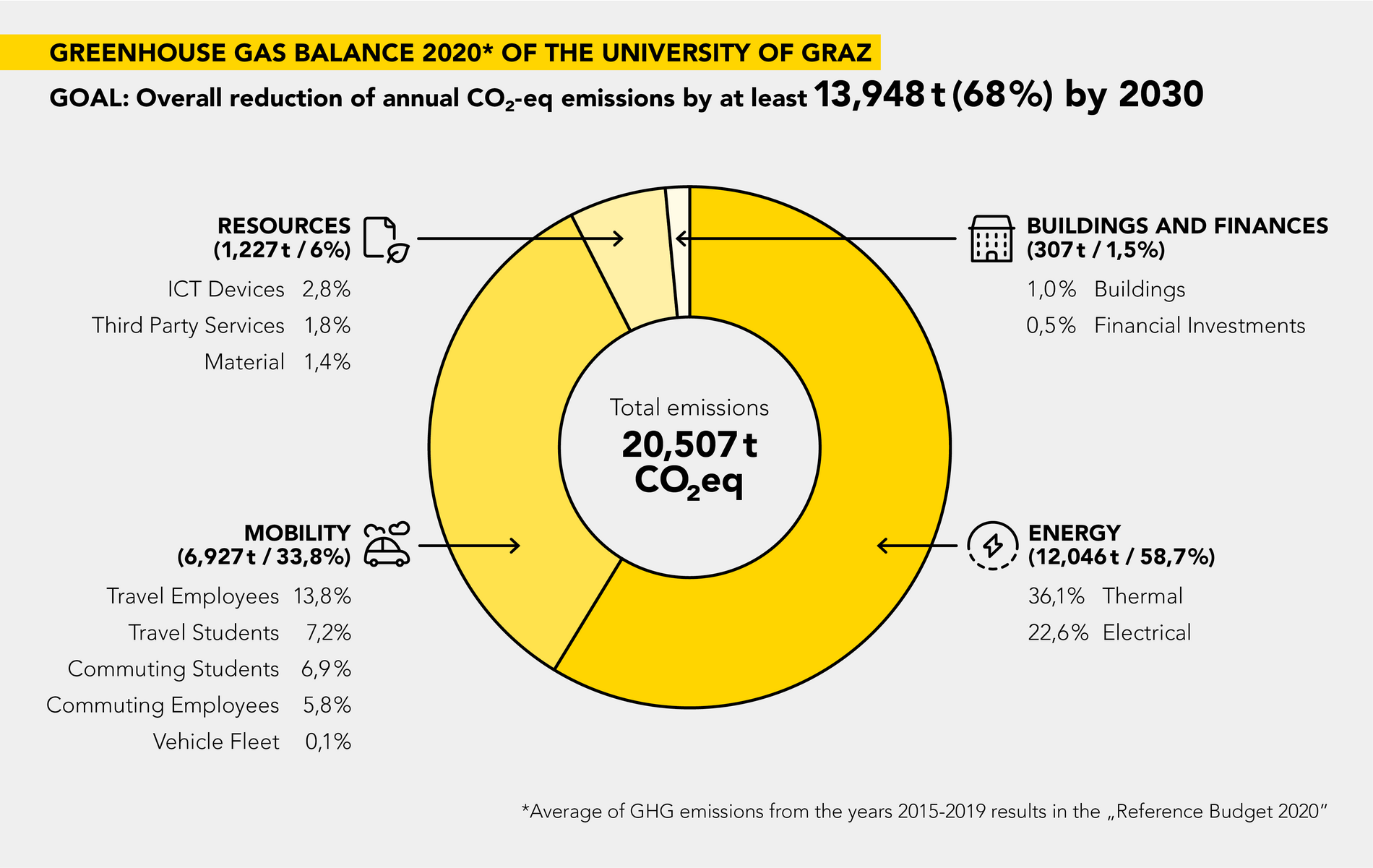The path to climate neutrality
By 2030, the University of Graz aims to reduce emissions by at least two thirds with its measures and to achieve "net zero emissions" by participating in carbon storage in Austria. According to the carbon management approach of the University of Graz, true climate neutrality means that at least 90 percent of emissions must be reduced. The University of Graz has set this as its goal by 2040. In order to successfully achieve the goal of climate neutrality, a greenhouse gas balance was drawn up, which is the starting point of the roadmap to a climate-neutral Uni Graz.
What is and what does CarbonTracer do?
CarbonTracer is a service for the reliable calculation and realistic mapping of greenhouse gas emissions in the area of mobility and differentiates between various means of transport. The entire life cycle of the means of transport is taken into account.
The service can support you, for example, in the following areas:
- Forecasting: Planning of (business) trips (comparison of GHG emissions regarding means of transport)
- Backcasting: GHG emissions of past (business) trips (monitoring of GHG emissions)
- Nowcasting: GHG live calculator (e.g. overlay app with emissions tracking during the trip)
- Commuting: evaluation/comparison of "commuting routes" for more climate-friendly commuting
The greenhouse gas balance of the University of Graz
The greenhouse gas balance was calculated on the basis of the years 2015 to 2019 and represents the starting point on the way to implementing climate protection measures.
The roadmap to a climate-neutral University of Graz
With the help of the planned measures, the University of Graz wants to be able to balance its operations with "net zero emissions" by 2030 and achieve complete climate neutrality by 2040.
Step by step climate fit: Measures of the University of Graz
Ecoprofit since 2005.
In order to continuously improve its environmental performance, the University of Graz has participated in the environmental program ÖKOPROFIT ( ÖKOlogisches PROjekt Für Integrierte UmweltTechnik) of the City of Graz since 2005.
EMAS validation since 2016.
EMAS is a voluntary system with the aim of promoting continuous improvement in corporate environmental protection. Companies and organizations in the EU can be validated for this purpose.
Certified bicycle-friendly company since 2017.
The "CFE certification as a bicycle-friendly company" is a Europe-wide award based on EU standards, which is awarded in Austria by the Mobility Research Association in cooperation with the Radlobby Österreich. Among other things, it evaluates the availability of a sufficient number of high-quality bicycle parking spaces and the promotion of cycling motivation among employees.
Greenhouse gas emissions in organizations arise in four areas: Energy, mobility, resources, and in the area of buildings and finance. The carbon management approach determines which actors can act and how. The starting point for the measures that lead to emission reduction and storage is the greenhouse gas balance, which is calculated at the beginning of the project. The Carbon Management approach can be used for institutional, personal, public, non-profit as well as commercial entities. Click here for more information on the Carbon Management Approach and its applicability to your organization.

